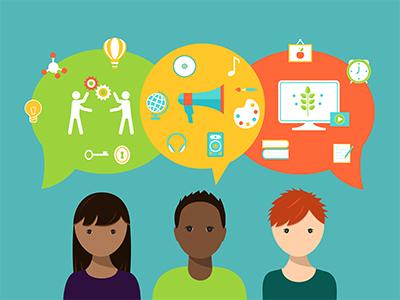Sharing Information
Scientists may work alone in their laboratories for a while, but then they usually share the results of their work with others.
The "sharing of information" between scientists is a form of communication that we call "collaboration." Collaboration helps scientists form a broader or more complete picture. NIEHS scientists collaborated with scientists in several other laboratories to identify the genes that may cause some forms of breast cancer and prostate cancer.
In addition, scientists exchange information with other scientists in order to "corroborate" their findings. This means that they compare their research results with those of other scientists doing the same or similar work in order to validate (verify) the accuracy of their results. This would be like when you compare your answer to those of your teacher or classmates to make sure you are on the right track!
Such efforts helped NIEHS discover more about some of the causes of those cancers in much less time, which means that cures for some of these cancers may also be found more quickly! Science can only advance through effective communication, collaboration, and corroboration among scientists. Learn more about becoming a scientist yourself someday!




